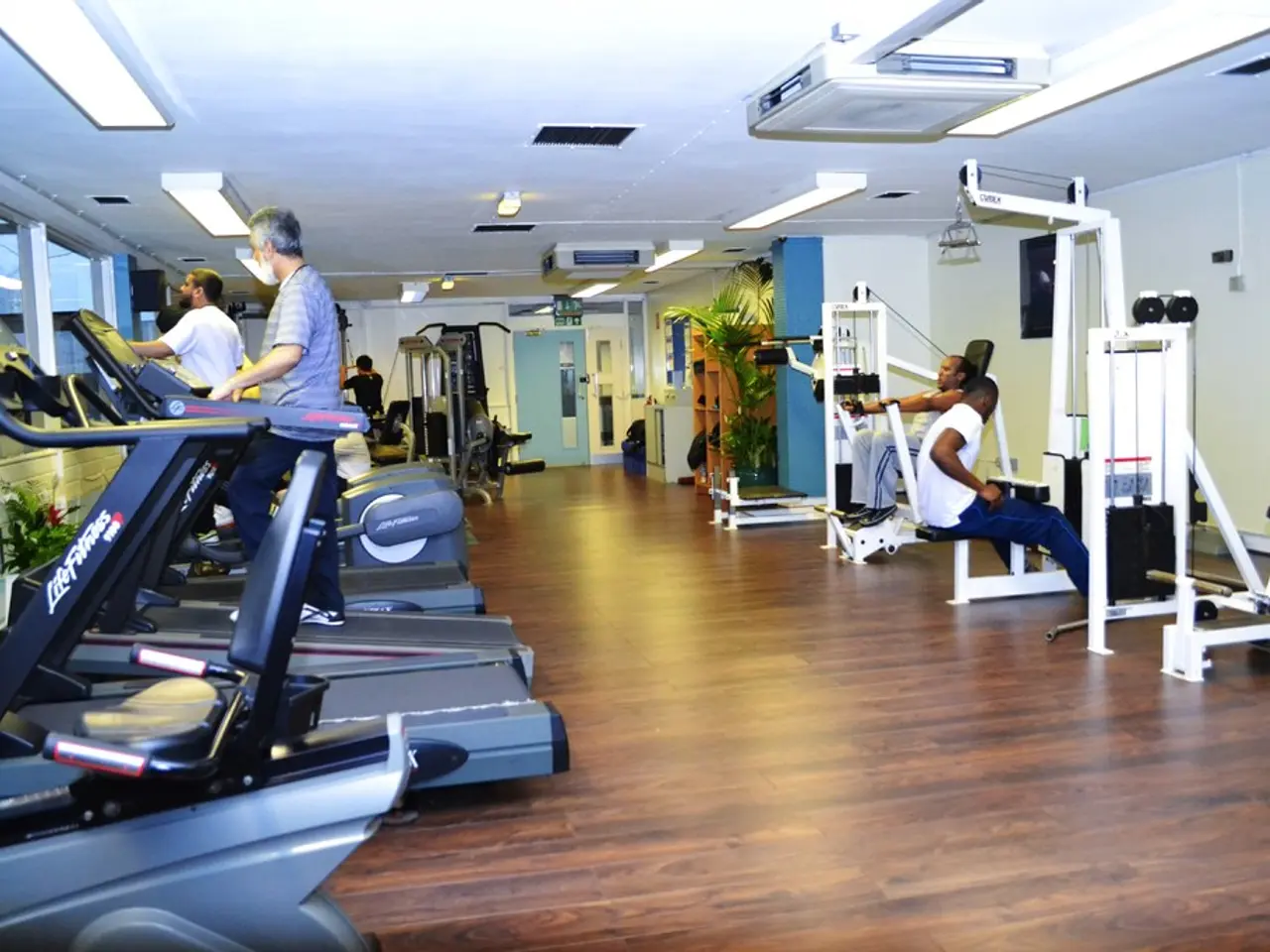Strengthening Exercises Essential for Individuals Over Age 50 to Implement Immediately for Enhanced Muscular Fortitude
In the pursuit of maintaining a healthy and active lifestyle, strength training becomes increasingly important as we age, particularly for individuals over 50. Research shows that with the right approach, older adults can gain muscle and strength at similar rates as younger adults [1].
Effective strength training habits for this age group involve progressive resistance training combined with adequate protein intake and proper recovery.
Progressive Resistance Training
The key to successful strength training lies in gradually increasing weight, repetitions, or intensity over time to stimulate muscle growth and strength gains. This approach combats age-related muscle loss (sarcopenia) and preserves metabolic health [1][4].
Training Frequency and Structure
A balanced programme should include training 2–4 times per week, with full-body or split routines that address all major muscle groups. Particular focus should be placed on the back to support spine and shoulder health [2][3]. To avoid excessive joint stress and prevent injury, it's advisable to limit heavy barbell lifts and risky movements [2].
Protein-Forward Nutrition
Consuming sufficient protein is essential to support muscle protein synthesis, which slows with age. This intake, combined with resistance training, enhances muscle repair and growth [1]. Aim for 0.7 to 1 gram of protein per pound of body weight daily.
Recovery Emphasis
Older adults recover more slowly due to hormonal and physiological changes. Allowing adequate rest and managing lifestyle factors like sleep and stress aids muscle growth and bone remodeling [1][5]. Schedule at least one full rest day every week, and use rest days for light yoga or stretching.
Bone Density Benefits
Strength training induces micro-tears in muscles and stimulates bone remodeling to increase bone density and strength, crucial to reducing fracture risk in older adults [4].
Training Smarter, Not Just Harder
Consistency, injury prevention, and exercises that strengthen the posterior chain to support functional movement and longevity are key considerations [2][5]. Specific recommended exercises include fundamental compound movements, performed safely and potentially divided across workout days, with adaptations to intensity and volume based on recovery capacity [3][5].
Building a Strong Core
Strengthening the core beyond crunches is important for stabilizing the spine, improving posture, and enhancing movement safety and efficiency. Perform planks, side planks, and bird dogs for core stability, and add rotational moves like cable or band twists for deeper, functional core work.
Start Light and Progress Gradually
Begin strength training with light weights and gradually add resistance as strength improves. Practice simple mobility drills for hips, shoulders, and spine to ensure a full range of motion for strength and mobility gains in compound lifts.
Sleep and Eating Well
Aim for 7 to 8 hours of restful sleep each night, and fill your plate with whole foods like lean proteins, veggies, fruits, and healthy fats to support your strength training efforts.
In conclusion, a combination of regular, well-structured resistance exercise, targeted nutrition, and recovery creates an environment for sustainable muscle building, improved bone health, and metabolic maintenance well after age 50. Don't skip strength training after 50 – it's essential to maintain muscle, protect joints, and improve metabolism.
- To combat age-related muscle loss, engaging in progressive resistance training with adequate protein intake is crucial for preserving metabolic health and promoting muscle growth and strength gains.
- In a balanced fitness program for older adults, full-body or split routines should be implemented 2-4 times a week, with a focus on the back to support spine and shoulder health.
- Adequate sleep and stress management are essential for older adults to recover properly, aiding muscle growth, bone remodeling, and overall health and wellness.
- Strength training increases bone density and strength, reducing fracture risk in older adults, and proper nutrition is key to enhancing muscle repair and growth.
- Combining regular resistance exercise, nutrition, and recovery creates an environment for sustainable muscle building, improved bone health, and metabolic maintenance, effectively promoting longevity well into the golden years.




